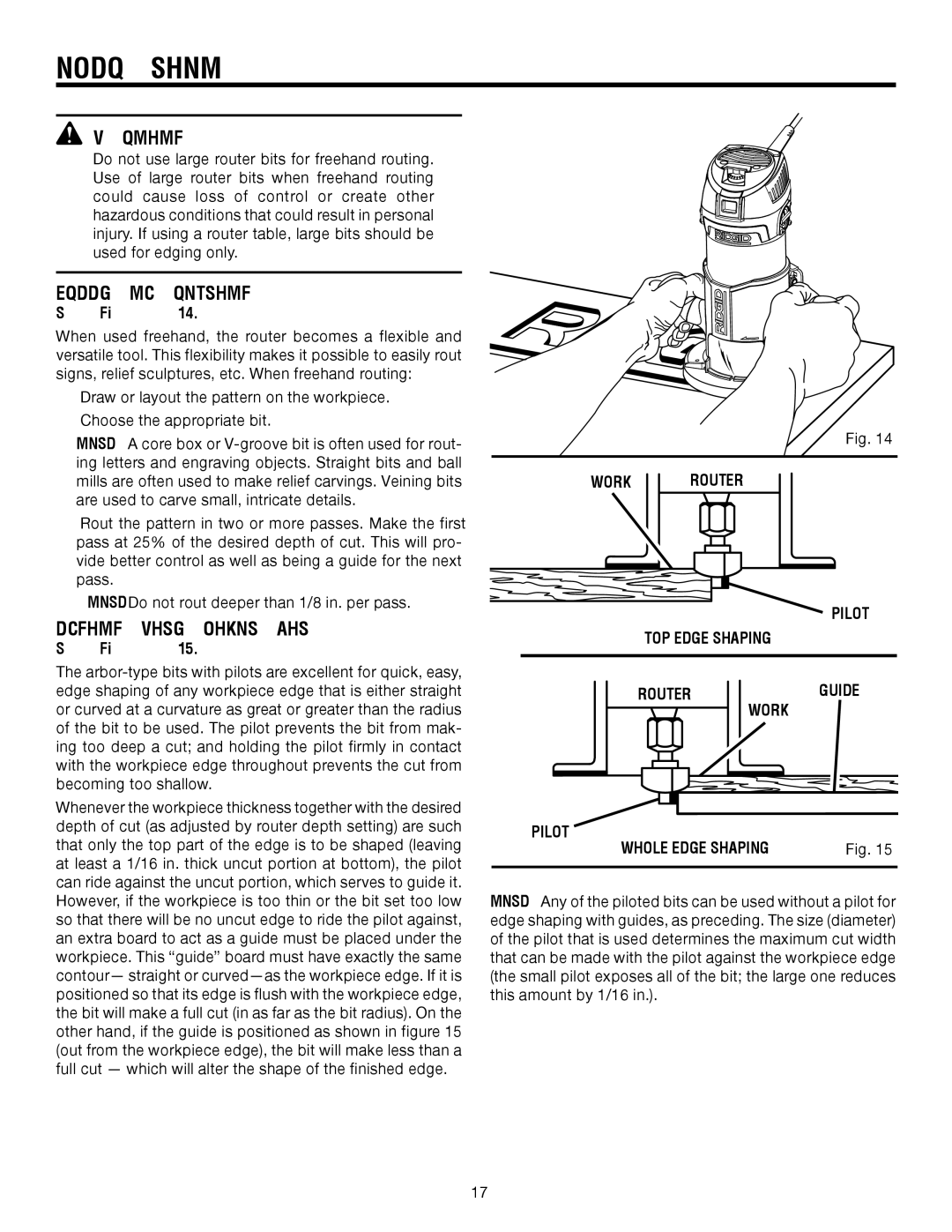
OPERATION
WARNING:
Do not use large router bits for freehand routing. Use of large router bits when freehand routing could cause loss of control or create other hazardous conditions that could result in personal injury. If using a router table, large bits should be used for edging only.
FREEHAND ROUTING
See Figure 14.
When used freehand, the router becomes a flexible and versatile tool. This flexibility makes it possible to easily rout signs, relief sculptures, etc. When freehand routing:
Draw or layout the pattern on the workpiece.��
Choose the appropriate bit.
NOTE: A core box or
Rout the pattern in two or more passes. Make the first pass at 25% of the desired depth of cut. This will pro- vide better control as well as being a guide for the next pass.
NOTE: Do not rout deeper than 1/8 in. per pass.
EDGING WITH PILOT BIT
See Figure 15.
The
Whenever the workpiece thickness together with the desired depth of cut (as adjusted by router depth setting) are such that only the top part of the edge is to be shaped (leaving at least a 1/16 in. thick uncut portion at bottom), the pilot can ride against the uncut portion, which serves to guide it. However, if the workpiece is too thin or the bit set too low so that there will be no uncut edge to ride the pilot against, an extra board to act as a guide must be placed under the workpiece. This “guide” board must have exactly the same contour— straight or
Fig. 14
WORK ROUTER
PILOT
TOP EDGE SHAPING
ROUTERGUIDE
WORK
PILOT
WHOLE EDGE SHAPING | Fig. 15 |
|
|
NOTE: Any of the piloted bits can be used without a pilot for edge shaping with guides, as preceding. The size (diameter) of the pilot that is used determines the maximum cut width that can be made with the pilot against the workpiece edge (the small pilot exposes all of the bit; the large one reduces this amount by 1/16 in.).
17
